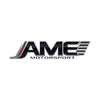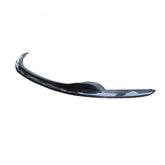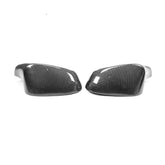Decode the Sidewall: Understanding What Your Tyre's Markings Really Mean
Ever glanced at your tyre's sidewall and wondered what all those numbers and letters mean? Beyond the brand and model name, a tyre's sidewall contains essential information that can tell you a lot about its specifications, capabilities, and safety features. Let's decode these markings and understand what your tyre's markings really mean.
Tyre Size
One of the most prominent markings is the tyre size, presented in a sequence like "205/55R16 91V."
- 205 indicates the tyre's width in millimeters from sidewall to sidewall.
- 55 is the aspect ratio, which is the height of the tyre's sidewall as a percentage of its width. In this case, the sidewall height is 55% of 205 mm.
- R stands for Radial, referring to the tyre's construction. Most modern tyres are radial tyres.
- 16 tells you the diameter of the wheel in inches that the tyre is meant to fit.
- 91 is the load index, representing the maximum weight the tyre can support when fully inflated.
- V is the speed rating, indicating the maximum speed at which the tyre can carry a load corresponding to its load index under specified service conditions.

Treadwear, Traction, and Temperature Ratings
Often found together, these ratings provide insights into a tyre’s durability and performance in different conditions:
-
Treadwear Grade: A comparative rating based on the wear rate of the tyre when tested under controlled conditions. A higher number signifies a tyre that should last longer, with a base value of 100. Thus, a tyre with a treadwear rating of 300 is expected to last three times as long as the reference tyre.
-
Traction Rating: This rating (AA, A, B, or C) indicates the tyre's ability to stop on wet pavement as measured under controlled conditions. AA is the highest rating, followed by A, B, and C.
-
Temperature Rating (A, B, or C): Reflects the tyre's resistance to heat generation under test conditions. 'A' represents the best performance in sustaining controlled temperatures, followed by 'B' and 'C'.
UTQG (Uniform Tyre Quality Grading)
This system was established to provide consumers with useful information regarding treadwear, traction, and temperature resistance. It includes the treadwear grade, traction rating, and temperature rating discussed above.
Additional Markings
- M+S or M/S: Indicates that the tyre is suitable for all-season driving, including mud and snow.
- DOT: Signifies compliance with the United States Department of Transportation tyre safety standards. A code follows this marking, providing information about the manufacturing location, tyre size, and the week and year of manufacture.
- Max Load: The maximum load the tyre can carry at the specified tyre pressure.
- Max Pressure: The maximum air pressure the tyre should be inflated to. It's important to note that this is not necessarily the recommended pressure; always follow the vehicle manufacturer’s recommendation.
Reading the Date Code
The tyre's manufacture date is indicated by a four-digit code, with the first two digits representing the week and the last two the year of manufacture. For example, "3219" would mean the tyre was manufactured in the 32nd week of 2019.
Understanding your tyre's sidewall markings is crucial for selecting the right tyres for your needs, maintaining them properly, and ensuring your safety on the road. Next time you're checking your tyres, take a moment to decode these markings and appreciate the wealth of information they provide.










